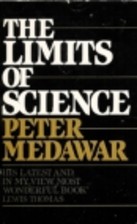Just what are these “standard procedures and criteria” that scientists apply in their attempt to arrive at an accurate and reliable representation of the world in which we live? Most scientists, including Wolfs, boil them down to the four following essentials:1
- Observation and description of a phenomenon or group of phenomena.
- Formulation of a hypothesis to explain the phenomena. (In physics, the hypothesis often takes the form of a mathematical relationship.)
- Use of the hypothesis to predict other phenomena or to predict quantitatively the results of new observations.
- Performance of experimental tests of the predictions by several independent experimenters.
If the experiments bear out the hypothesis, it may come to be regarded as a theory or law of nature. If they do not, the hypothesis must be rejected or modified. As Wolfs explains, “No matter how elegant a theory is, its predictions must agree with experimental results if we are to believe that it is a valid description of nature. In physics, as in every experimental science, ‘experiment is supreme’ and experimental verification of hypothetical predictions is absolutely necessary.”1
Wolfs further notes that this necessity of experiment in the method is tantamount to requiring that a scientific hypothesis be testable. “Theories which cannot be tested, because, for instance, they have no observable ramifications (such as, a particle whose characteristics make it unobservable), do not qualify as scientific theories.”1 It is fairly obvious that if a hypothesis cannot be tested, it should more properly be called a conjecture or speculation, in which case the scientific method can say little about it.
—
Included below is a graphic representation of the method Baumgardner is discussing, not included in his article:









